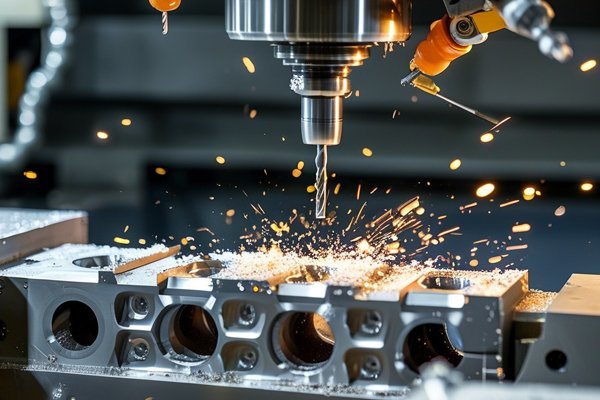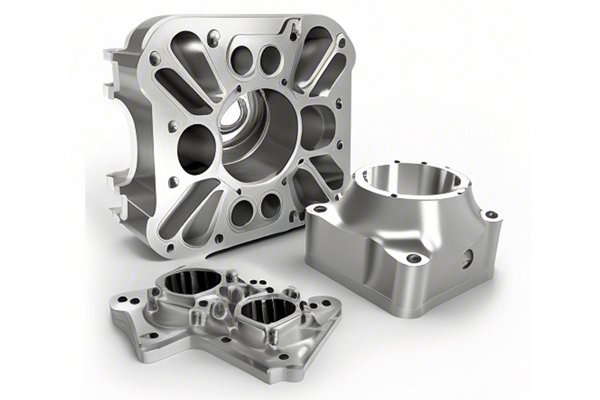Did you know that aluminum is one of the most recycled metals globally, with nearly 75% of all aluminum ever produced still in use today? This astounding fact underscores the importance of aluminum not only in sustainability but also in industry—particularly in the realms of manufacturing and engineering. With the rise of advanced technologies, CNC (Computer Numerical Control) machining has emerged as a leading method for producing custom aluminum parts, especially in manufacturing hubs like China. In this blog, we will explore the myriad benefits of CNC machining for custom aluminum parts, highlight challenges and solutions, and ultimately help you understand why choosing this precise and efficient manufacturing method can be a game-changer for your business.
Understanding CNC Machining
Before diving into the specific benefits of CNC machining for custom aluminum parts, let’s take a moment to understand what CNC machining entails.
CNC machining is a subtractive manufacturing process that utilizes computer-controlled machines to shape and fabricate materials, often metals like aluminum. With its roots dating back to the 1940s and 50s, CNC machining technology has evolved significantly, enabling manufacturers to produce complex components with high precision.
The CNC machines are programmed with specific designs and commands that guide the cutting tools, whether milling, turning, or drilling, to create the desired shapes and features. This level of automation not only reduces human error but also accelerates production timelines.
The Advantages of CNC Machining for Custom Aluminum Parts
Now that we have a grasp on CNC machining, let’s explore its specific benefits for fabricating custom aluminum parts in China.
CNC machining is renowned for its unparalleled precision. When it comes to custom aluminum parts, the exacting tolerances required in the aerospace, automotive, and electronic industries can be achieved with ease. CNC machines can consistently reproduce complex geometries, which is especially critical for clients needing high-quality parts for specialized applications.
For instance, tight tolerances of +/
When considering manufacturing in China, cost efficiency is crucial. CNC machining can drastically reduce labor costs through automation, thus saving money on large orders. There’s also reduced material waste due to the precise cutting capabilities, meaning less scrap and lower expenses for materials.
Moreover, while the initial costs of CNC machines can be high, they produce parts faster than manual processes, leading to overall lower production costs over time. For businesses looking to scale, this cost-effectiveness becomes even more significant.
CNC machining supports a range of manufacturing capabilities, making it a versatile solution for various industries. Custom aluminum parts can be designed to meet specific requirements, including unique shapes, sizes, and features.
In addition, different types of CNC machines—milling machines, lathes, and routers—can handle multiple operations simultaneously, making it easier to manufacture complex parts in fewer steps. For businesses in industries such as automotive and aerospace, having the flexibility to modify designs quickly can be a tremendous asset.
When time is of the essence, CNC machining proves to be a superior method of production. The computer-controlled systems can operate continuously, with minimal downtime, optimizing productivity. Whether for short runs or large volumes, the ability to manufacture components at high speeds is a crucial advantage for companies needing timely deliveries to stay competitive.
One of the added benefits of CNC machining is the high-quality finish it provides on custom aluminum parts. With advanced tooling and machining strategies, manufacturers can achieve smooth surfaces with tight tolerances, eliminating the need for excessive post-processing. This quality is particularly critical in industries where cosmetic appearance matters, such as consumer electronics and automotive design.
Aluminum itself is highly revered for its lightweight characteristics without sacrificing strength. When produced through CNC machining, custom aluminum parts retain these attributes with high levels of repeatability and durability. This reliability is essential for products used in high-stress environments, ensuring they stand the test of time.
For custom aluminum parts requiring complex features, CNC machining excels in incorporating intricate details, such as threads, holes, and paths, without additional tooling. The machine’s programmability allows designers to specify features that would be challenging—if not impossible—to achieve through traditional manufacturing methods.
With the global push towards sustainability, CNC machining for custom aluminum parts offers an environmentally friendly approach. The precision of CNC machining significantly minimizes waste, and the aluminum itself is a recyclable material.
Manufacturers can target sustainable practices in their production processes, positioning themselves as eco-conscious companies that align with modern consumer values.
Challenges in CNC Machining for Custom Aluminum Parts

Despite its many advantages, CNC machining also comes with its set of challenges. Understanding these challenges allows businesses to take necessary precautions to ensure successful manufacturing.
Setting up and programming CNC machines can be time-consuming and requires skilled personnel. Understanding tooling, machine operation, and program writing are essential components that can create a bottleneck at the start of the manufacturing process.
To solve this, manufacturers can invest in intuitive CAD/CAM software that simplifies the design-to-manufacturing workflow, reducing programming times and minimizing errors in myriad ways.
CNC machines must be regularly maintained to ensure optimal performance. If preventative measures are overlooked, the potential for breakdowns increases, which can lead to costly downtime.
A scheduled maintenance plan (including regular checks and replacements of worn parts) can be implemented to mitigate unexpected issues and uphold machine reliability over time.
While aluminum is fantastic for many applications, it may not be the best material choice for every custom part. Applications requiring extremely high strength or resistance to corrosion might warrant investigating other materials, like titanium or high-performance polymers.
Working with experienced manufacturers can help in assessing material requirements according to specific applications, ensuring the best outcomes.
Optimizing the CNC Machining Process for Custom Aluminum Parts
Given these benefits and challenges, optimizing the CNC machining process becomes critical to maximizing productivity and minimizing downtime.
When sourcing custom aluminum parts from China, partnering with a reliable CNC machining supplier is paramount. Factors such as technical capabilities, quality control measures, and proven experience in aluminum machining should heavily influence your decision.
Research suppliers, and seek those with certifications that demonstrate adherence to international manufacturing standards—ISO certifications, for instance—can provide additional reassurance.
Utilizing CAD (Computer-Aided Design) software during the initial design phase can enhance the manufacturability of custom parts. Engaging with design engineers early on ensures that designs take into account the capabilities and limitations of CNC machining processes. This collaboration leads to better outcomes and reduces costly design revisions later on.
Employing five-axis CNC machining can further enhance the complexity and quality of aluminum parts. By being capable of cutting from multiple angles, manufacturers can produce intricate designs that would be difficult with traditional three-axis machining.
Investing in advanced machining strategies, such as adaptive machining, can also optimize toolpaths based on real-time feedback, improving efficiency and surface finish quality.
Effective communication between designers, engineers, and manufacturers is crucial throughout the production process. Utilize cloud-based software platforms for sharing designs and feedback to facilitate smoother collaboration. Regular check-ins can identify potential hurdles early on, resulting in quicker resolution and reduced delays.
CNC machining represents a high-tech, efficient, and cost-effective approach for producing custom aluminum parts in China. Its advantages—precision, versatility, speed, and sustainability—create substantial opportunities for businesses operating in various industries.
Understanding the challenges associated with the process enables stakeholders to make informed decisions that can enhance the value chain. As global demand for aluminum raises, leveraging CNC machining can become a key differentiator in a competitive landscape.
Ultimately, choosing CNC machining for your custom aluminum parts is not just about manufacturing costs—it’s about quality, reliability, and long-term success. By investing in this technology, you position your business to adapt and thrive in an ever-evolving manufacturing environment.
In conclusion, as you consider your production needs, remember the significance of efficiency, quality, and collaboration in your approach to custom aluminum parts. Make smart choices informed by the insights shared in this blog, and your business will reap the benefits of advanced manufacturing technology. Embrace the future of CNC machining and watch as it transforms your production processes and contributes to your bottom line.






